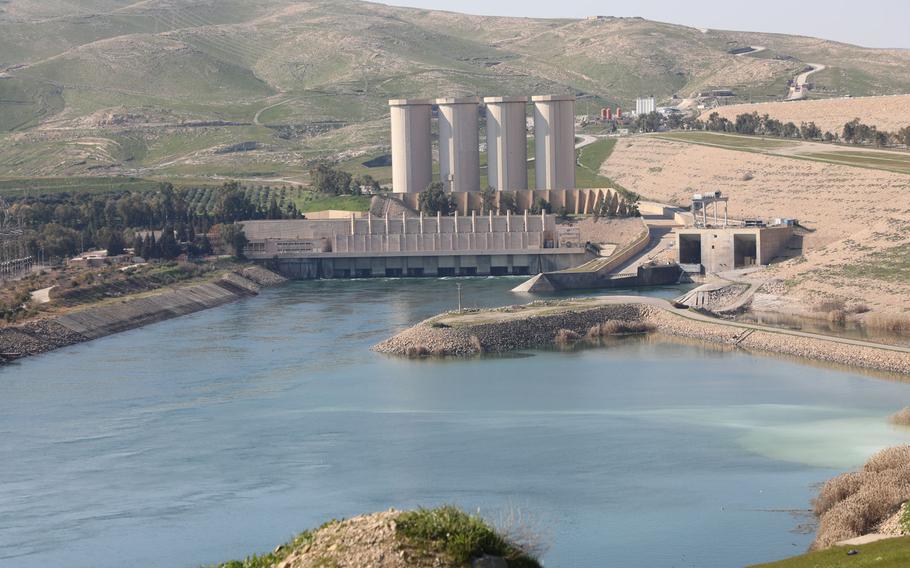Alwaght- Weeks after the devastating Libya flood that was caused by the collapse of a dam and killed thousands of people, now there are warnings about the repeat of this catastrophe in Iraq’s Mosul that can be more devastating than the Libyan dam breaking.
Al-Hurra news website, citing the US National Geographic magazine, described the condition of the Mosul Dam as “alarming” and called it the world’s most risky dam.
The report discusses the consequences of collapse of the dam both in terms of human tolls and economic damages.
The Mosul Dam, which was described in 2006 by the United States Army Corps of Engineers as the world’s most risky dam, is 131 meters high and 3 kilometers wide and its maximum storage capacity is 11 billion square meters.
This dam is the largest water reservoir in Iraq and the fourth largest dam in the West Asia region, and in addition to providing drinking and agriculture water for the residents of Mosul, it is a source of electricity for about 1.7 million people. It is built on chalk foundation. To fill the cracks on its body, constant and regular injection of concrete is necessary, and this operation has been in place since 1984, the year the dam construction was completed.
With the domination of the ISIS terrorist group over Mosul and the halt of concrete injection operation to strengthen the foundations of the dam, concerns about the possibility of a disaster grew. ISIS seized the dam on August 8, 2014 and it was recaptured from the terrorist group 16 months later, but the dam took considerable damage during its short seizure time.
In 2016, a study by Lulea University of Technology of Sweden found that 4 hours after possible collapse of the dam, Mosul will be swept through with a 24-meter high water wave, and a 15-meter high wave will then smash Tekrit.
Also, this wave will reach Baghdad, 640 kilometers south of Mosul, less than 48 hours after the collapse of the dam, and the capital will face a devastating wave with a height of 4 meters, which will submerge an area of about 210 square kilometers around the capital.
The collapse of the dam, in addition to financial and human losses, will also have other secondary and long-term effects that add to the scale of the disaster. These effects include destruction of electricity production network and water mains and agricultural production, leaving the life of the citizens in dire straits.
Even now, the National Geographic network, quoting experts, warns that if the flood path is not cleared within three or four hours, the collapse of the dam could lead to the death of 1.5 million people living along the Tigris River.
The report by the network believes that the potential for a massive human catastrophe is obvious. The collapse of the dam could also destroy thousands of archaeological and cultural sites along the Tigris River. These sites include Nimrud and Nineveh, the ancient capital of Assyria and once the largest city in the world and the first true empire that arose in the first millennium BC.
“It’s hard for me to come up with estimates other than thousands of archaeological sites and heritage sites would essentially be wiped away,” says Michael Danti, professor of archaeology at Boston University and co-director of the Syrian Heritage Initiative at the American Schools of Oriental Research, which is documenting the deliberate destruction of cultural heritage in Iraq and Syria. “It would be an unprecedented loss.”
After these warnings, Iraqi government in 2016 signed a contract with Italian company Trevi for repair and maintenance, and in the same year a separate agreement was signed with United State Army Corps of Engineers.
Despite the fact that the task was handed over to Iraqi companies in 2019, Italy continues to help the Iraqi government to maintain the dam structure, and even Turkey has made proposals to the Iraqi government to participate in the dam maintenance and reconstruction project.
Despite all warnings, the Iraqi government describes the concerns about health of the dam baseless, and last month Minister of Water Resources Aoun Dhiyab said the condition of the dam is “reliable and stable.”
“Earlier, there were concerns about the dam condition, but they are cleared now and the dam is in its best condition now,” he said in a television interview.
The United Nations Industrial Development Organization (UNIDO) earlier last month, too, said that the dam is “safe.”
The deputy project manager of UNIDO told Iraqi News Agency that the international council of experts was formed to examine the condition of the dam and the results of surveys were highly reassuring.
“In its last visit, the council recommended that the water level is raised up to 325 meters above sea level, which means that the dam is healthy and water level can be raised without problems,” he said.



























